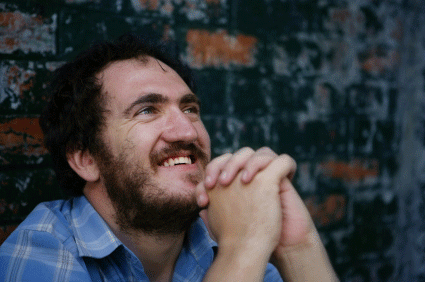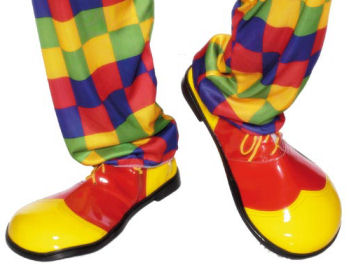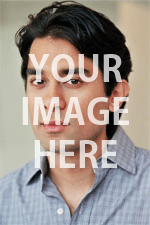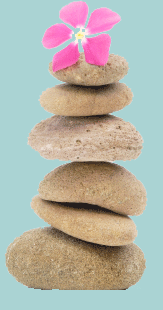 |
 |
|

Depressive disorders are
characterized by a sad/irritable mood that exceeds normal feelings of sadness
in intensity and duration. The negative thoughts, feelings, and behaviors
accompanied by depression are only the beginning of the symptoms those with
depression suffer--changes in bodily functions like body aches, low energy
and/or libido, and problems with weight, eating, and sleeping are also common.
The changes in the functionality of the bodies of those suffering from
depression are referred to as neurovegetative signs, referring to the fact that when the nervous system is altered by
depression, physical changes result, often causing diminished abilities and
participation.
A sick mind can easily lead to a sick body, which is one of the major reasons
treating depression is so important. Anxiety, stress, and depression that
continue for extended periods of time without relief can lead to a condition
known as distress. Distress is your body's negative reaction to stress and can disturb your
body's equilibrium, which can lead to health problems like insomnia, sexual
dysfunction, headaches, upset stomach, chest pain, and elevated blood pressure.
A major study also found that depression caused more health problems than those
suffering from arthritis, chronic lung disease, hypertension, and diabetes.
Because of the many health problems that happen as a result of depression, it's
frequently under-diagnosed. More so than just making it likely that sufferers of
depression will develop these medical conditions, those who battle depression
have weakened immune systems, in addition to a diminished desire to fight their
way back to good health.
According to WebMD.com, depression affects more than 19 million people each
year, a serious epidemic that affects the way sufferers function at work, at
home, and in relationships. Depression should be considered a serious illness
that requires immediate attention for the health and safety of the patient. In
most cases, a full recovery from depression is possible; allowing patients to
slowly return to their original lives as they feel happier, healthier, stronger,
and more able to deal with the everyday stresses of life.
|
|
 |
 |
|
 Acupuncture originated in
China over 5,000 years ago, and is based upon the premise that all living
beings have "qui," or vital energy. This energy circulates throughout
the body via 12 invisible energy lines known as meridians, with each individual
meridian associated with a different organ system. When this flow of qui is
disrupted and an imbalance occurs, disease begins. Acupuncturists seek to
correct these imbalances of qui by inserting needles at one of over 1,000
acupuncture points along the body's meridian lines. Acupuncture originated in
China over 5,000 years ago, and is based upon the premise that all living
beings have "qui," or vital energy. This energy circulates throughout
the body via 12 invisible energy lines known as meridians, with each individual
meridian associated with a different organ system. When this flow of qui is
disrupted and an imbalance occurs, disease begins. Acupuncturists seek to
correct these imbalances of qui by inserting needles at one of over 1,000
acupuncture points along the body's meridian lines.
Acupuncture is used to treat a variety of maladies, from addictions to
infertility, sciatica, arthritis, asthma, menstrual cramps, migraines,
fibromyalgia, back pain, and asthma, among many others. Before the appointment,
clients are usually asked to complete a brief health history questionnaire,
followed by an interview with the acupuncturist. In the interview, the
acupuncturist will ask the primary health concern that brings them to seek
acupuncture, as well as questions about health and lifestyle; like diet and
sleep habits, stress levels, allergies and food sensitivities, appetite, and
emotions. The acupuncturist will also observe the client for overall health,
checking out tongue color and coating, voice quality, and face color. The
acupuncturist will check the client's pulse at 3 different points on the wrist,
to determine the health of the 12 meridians.
After the acupuncturist has interviewed and observed the client and made a
diagnosis, treatment begins. The typical treatment includes from 6-12 needles--
it's the location of the needles that is important, not the number. Even for
those squeamish around needles, acupuncture is usually still comfortable, with
the client feeling only a slight sting or prick when the needle is inserted.
After that initial twinge, any pain, discomfort, and numbness should be
communicated to the acupuncturist immediately. The typical acupuncture
treatment takes no longer than an hour.
Today, acupuncture is one of the most well known varieties of alternative
therapy. Americans spend over $500 million annually on acupuncture treatments, and
many insurance policies now cover acupuncture.
|
|
 |
 |
Leafy green vegetables like kale, spinach, and
chard are full of vitamins K and C, iron, and beta-carotene. Kale has powerful
antioxidant and anti-inflammatory properties. Particularly when chopped, kale
contains a potent cancer fighting agent called sulforaphane. Eat generous
helpings of leafy greens like kale and every cell in your body will thank you.
Ingredients:
1 large bunch of kale, chard
2 tablespoons extra-virgin olive oil
fine grain sea salt
5 cloves of garlic, crushed and chopped
1/4 cup Parmesan cheese (opt)
crushed red pepper flakes
Directions:
To de-stem each leaf of chard/kale, grab the main stalk in one hand and strip
the leaf from the stem all the way up with the other. I then tear the big
leaves into bite-sized pieces, but you can use a knife for this task if you
prefer. Wash the greens in a big bowl (or sink) full of clean water, rinsing
and swishing to rinse away any stubborn grit and dirt. Drain, rinse again, and
set aside.
Hold off cooking the greens until just before eating. Then, in a large skillet
heat the olive oil. Add a couple big pinches of salt and the greens. They
should hiss and spit a bit when they hit the pan. Stir continuously until their
color gets bright green, and they just barely start to collapse - two, three,
maybe four minutes, depending on how hot your pan is, and how much structure
your greens have. Then, just thirty seconds before you anticipate pulling the
skillet off of the heat, stir in the garlic. Saute a bit, remove the pan from
the heat, stir in the Parmesan, and add a big pinch of crushed red pepper
flakes. Taste, add a bit of salt if needed, and serve immediately.
|
|
 |
 |
|
 Hunter 'Patch' Adams was
born in 1945 in Washington, D.C. Patch first visited a mental hospital at the
young age of 17, when he was sent by his mother because he was contemplating
suicide. During his stay, he became acquainted with the problem of lonely
patients who didn't have the stability of people in their lives who genuinely
cared for and loved them. Called to the cause of providing medicine with
healthy doses of love and companionship, Patch decided to become a doctor who
would use medicine as a vehicle for social change; helping patients find
meaning in their lives by incorporating arts and crafts, performing arts,
nature, education, recreation, and social therapy as vital components of
treatment. Hunter 'Patch' Adams was
born in 1945 in Washington, D.C. Patch first visited a mental hospital at the
young age of 17, when he was sent by his mother because he was contemplating
suicide. During his stay, he became acquainted with the problem of lonely
patients who didn't have the stability of people in their lives who genuinely
cared for and loved them. Called to the cause of providing medicine with
healthy doses of love and companionship, Patch decided to become a doctor who
would use medicine as a vehicle for social change; helping patients find
meaning in their lives by incorporating arts and crafts, performing arts,
nature, education, recreation, and social therapy as vital components of
treatment.
According to Patch, he became a "student of life". Building friendships
was something that came easily to Patch, but he still practiced by observing
people in different environments: one of his favorite social experiments was to
ride on elevators for hours at a time, introducing the other occupants of the
elevator, singing songs, and otherwise doing other things to draw them out of
their comfort zones and into communicating with each other.
"Patch" Adams was dubbed with his nickname during his residency at a
mental hospital, when a patient began calling him Patch for the way his
friendship had "patched" up the loneliness in his life. In 1971 Patch
and a group of 20 friends founded the Gesundheit! Institute; a six bedroom home
they operated as a free hospital - open 24 hours and available for ailments
from birth to death, minor to serious. The staff lived and worked at the
hospital, even working outside jobs to support their families. For 12 years
this pilot hospital served at least 3,000 patients, treating the psychiatric
patients without the use of psychiatric medicines. The staff believed that
friendship, joy, and support alone could provide a large amount of healing, but
referred patients that needed more help.
According to Patch, "One of the most radical parts of the vision was that
we wanted all of the activity to be infused with fun. I wanted to build the
first silly hospital in history. Foolishness was embraced, often to extreme, in
even the most profound of situations. We had fun deaths and bizarre, outlandish
behaviors with the mentally ill. In our normal, serious world with somber
medical environments (even though no research supports being serious and
thousands of research papers encourage joy and humor as healing), we saw no
contradiction in feeling that a hospital could also be an amusement park, even
implying it is important for staff and patient."
Now, over 30 years, thousands of patients, a bestselling book, and a feature
film starring Robin Williams later, Dr. Patch Adams and his colleagues
have continued their work, built upon the belief that responsible medicine
should involve much more than just treating symptoms. They've even
"fun-raised" in order to purchase 321 acres in Pocahontas County,
West Virginia--ultimately, the goal for this land is to build a 40-bed hospital
that will also include a domed "Daucha" for housing up to 8 staff
members, a 3 story woodshop, a chrysalis-shaped classroom, gardens, and a lake.
While they work to raise enough money for this endeavor, Patch and the members
of the Gesundheit! Institute keep busy, reaching approximately 150,000 people
each year via lectures at in 65 countries and 5 continents.
For more information on
Patch Adams and the Gesundheit! Institute, visit http://www.patchadams.org
|
|
 |
| Include your contact information below |
Your Name
800-123-4567

|
|
|
 |
|
In This Issue:
|
|
 |
|
Updates
|
|
Your Name
800-123-4567

|

|
|
Healing Affirmations: How a Positive Mind Equals Positive Results
|
|
Ever heard the aphorism
"mind over matter"? It's likely you have, and if you've used positive
affirmations, you'd probably agree that having a positive attitude and
directing it toward a desired outcome can be extremely powerful. Whether your
goal is to lose weight, find your soul mate, increase your self-esteem, or the
amount of money in your bank account, positive affirmations can help. You can
even help heal yourself by using positive, healing affirmations. Every
subconscious thought is a stream of affirmations, but the things we hold as
"inner truths" may not actually be true at all -- which is why it's
important to evaluate our self-talk. If you find your thoughts aren't
supportive of growth and healing, it's time to replace the toxic negativity
with positivity through healing affirmations.
Positive affirmations are short, positive statements centered toward a specific
goal or belief. If healing is your goal, your affirmations might sound
something like this:
My body is strong and capable, healing quickly and easily.
Every cell in my body vibrates with health and energy.
I love myself, which heals my life and nourishes my mind, body, and soul.
To start healing with positive affirmations, try saying them to yourself while
looking in the mirror, writing them down on notes and leaving them all over
your house, or even sing them!
source

|

|
|
Meditation anywhere
|
|
Meditating
doesn't have to
happen in lotus pose on a mountaintop-- meditating can be as simple as
taking a
break from your work, popping in some earbuds, and watching and
listening to a meditation video on the internet. Concentrate on deep,
slow breathing, ing negative thoughts and
worries, and living in the moment, concentrating on nothing else but
relaxation
and calm.

|

|
|
Selecting the Right Holistic Treatment
|
|
Holistic treatment refers
to the process of treating the whole person rather than a list of symptoms, and
with healthcare costs steadily on the rise, more and more patients are turning
to holistic treatment for help with balancing the mind, body, and spirit.
The long list of holistic treatment options can be overwhelming, but here's a
breakdown of the most popular 5 therapies:
Acupuncture- This traditional Chinese medicine utilizes needles inserted at
various points in the body along energy zones called meridians, stimulating the
flow of energy and positively influencing healing.
Aromatherapy- uses lotions, oils, and other naturally fragrant materials and
substances to treat with aromas that heal, energize, rejuvenate, and relax.
Homeopathy - seeks to treat disease with heavily diluted preparations created
from substances that would ordinarily cause effects similar to the disease's
symptoms. Side effects can be dangerous in some cases, so it's important that
this type of therapy be practiced by a knowledgeable practitioner.
Meditation - is used by some for reflection and personal development, while
others believe meditation is a powerful source of relaxation and rejuvenation.
Meditation is a form of concentration that increases awareness by removing
distractions, and encourages being in the here and how.
Reflexology - uses pressure applied to certain points in the hands and feet in
an effort to help the body to prevent illness and relieve pain.
Source: http://www.buzzle.com/articles/is-holistic-treatment-right-for-you.html
|
|
 |
